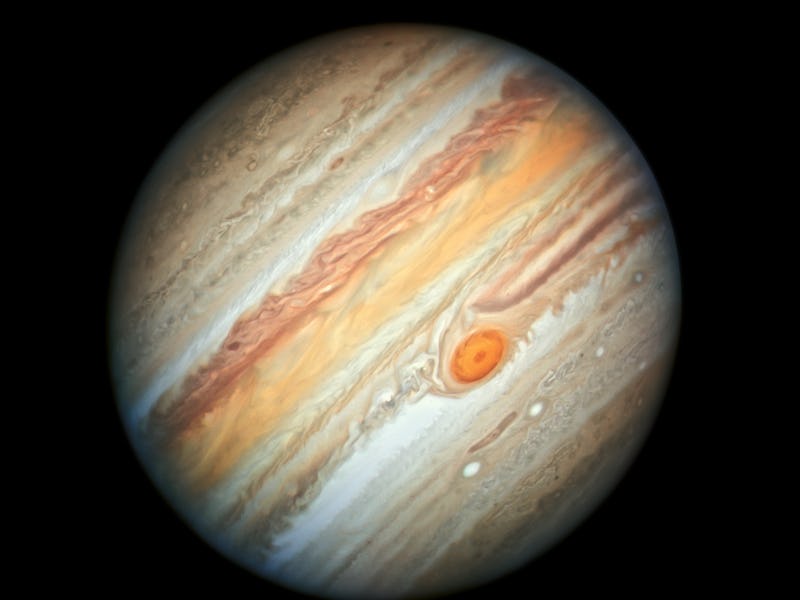You need to see Jupiter at its brightest on Tuesday morning
The planet will be at opposition, orbiting closest to Earth.

CELESTIAL OBJECTS COME AND GO FROM OUR VIEW IN THE NIGHT SKY, as they fling by or orbit around the Sun. Whether it be the full moon or a meteor shower or just the best night to see Mars, we're here to direct your eyes skyward and tell you to look up and appreciate the wonders of space from Earth.
This week, we're asking you to marvel at the beauty of the planet Jupiter as it reaches opposition in the early hours of the morning of Tuesday, July 14, appearing at its biggest and brightest to sky gazers on Earth.
Jupiter is the largest planet of the Solar System, more than twice as massive as all planets combined. Therefore, Jupiter is the second brightest planet in the night sky, second only to Venus, the second closest planet to the Sun.
Jupiter will appear as a bright star in the morning sky.
And this gas giant will appear as a bright, silver star similar to the Sun during the early morning hours of Tuesday as it comes in opposition
A planet coming in opposition means that they come directly opposite of the Sun, perfectly aligning with the Earth and the host star.
Jupiter will reach this fateful position at 04:00 am (EST) on Tuesday, and this already bright planet will appear even brighter in the twinkling light of dawn. Only the Moon and Venus will appear brighter than Jupiter on that night.
The planet will rise in the southeastern sky, and stay there until dawn. You can marvel at Jupiter using a pair of binoculars, and a small telescope will allow you to not only view Jupiter, but also observe its orbiting moons.
If you live in a crowded city like New York, it is best to get as high up as possible in order to minimize light pollution therefore going on a balcony or rooftop is highly recommended.
You also want to block out any light coming from screens of electronic devices, or flashlights and allow your eyes to get accustomed to the darkness for around 30 minutes before you look up.
Jupiter comes to opposition every 13 months. The last time the planet appeared this bright in the skies was on June 10, 2019 and the next time will be on August 19, 2021, according to EarthSky.